Like many of you reading this, eating my way across Sydney (and beyond) takes up a big part of the pie chart that is my life. A multi-course tasting menu and a steaming kimchi-jjigae are equally savoured in my books, so I thought I’d share some of the most memorable plates I’ve been fortunate enough to come across this year — 10 to be exact.
Mumu’s abalone with concealed vermicelli noodles, Poetica’s oysters covered in piping-hot ’ndjua, and Porkfat’s Phuket curry are a few of the plates you really ought to try (but best you don’t skip on the rest of the list).
Porkfat’s Phuket tiger prawn curry
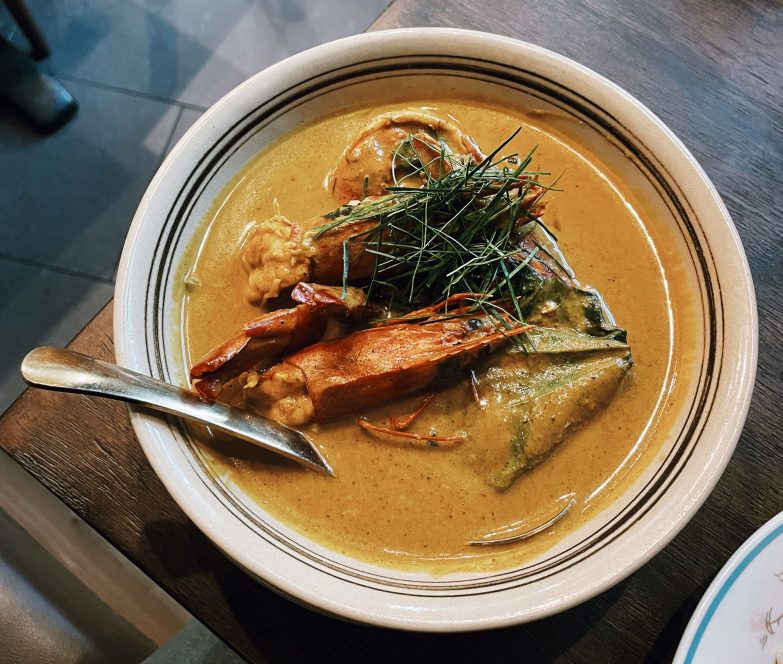
Porkfat in Haymarket is hands-down making some of the best Thai food in the city in my opinion. It’s another one of my most-visited eateries and I am slowly eating my way through the menu — which is hard when I must resist reordering the grilled pork jowl with smoked chilli nam jim.
Anyway, onto the curry, which is a yellow iteration per Phuket’s take. The Southern-style curry is made with Makrut lime leaves, betel leaves, and a generous amount of black pepper served with tiger prawns sourced from Queensland. The prawns are jumbo and the curry has a nice undercurrent of heat that’s mellowed out by the jasmine rice. I’m probably about to hit my 10th meal at Porkfat soon and I really appreciate the front-of-house team here, who gently make sure you don’t order too much.
Palazzo Salato’s ham
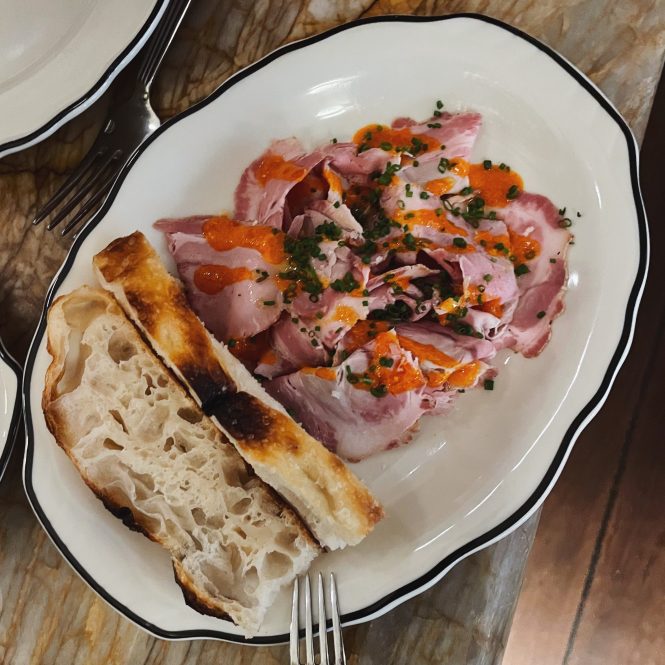
The salt palace aka Palazzo Salato has been cranking since it opened its doors earlier this year and is the largest venue from the Love Tilly Group. Having frequented its other Italo-leaning venues Fabbrica and Ragazzi, I was keen to see how the new addition would fit into the group’s portfolio. The answer hit me as soon as I stepped foot into Palazzo on a Saturday for lunch — it was absolutely packed.
The restaurant was offering a $65 lunch menu at the time and included a dish I hadn’t seen on a menu before — ham with Colatura hot sauce. I’ve had my fair share of cured meats but seeing ham solo was intriguing, and rightfully so. Shavings of ham are dressed in a hot sauce made with Colatura di Alici (an Italian aged fish sauce), garnished with chives, and served with two thin slices of focaccia. Eat as is or turn it into a mini ham sandwich.
Bar Copains’ beef tongue skewer
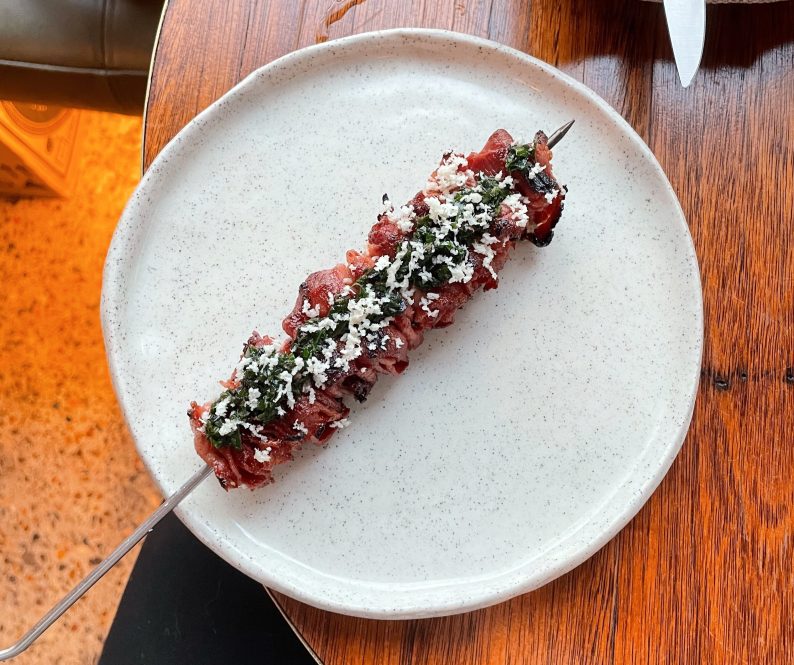
Every time I go to Bar Copains in Surry Hills (and there’s been many), a beef tongue skewer or two is what I call an essential order. I have high hopes it will never leave the menu (along with the amaro crème caramel), but until then, it’s mandatory eating at the venue spearheaded by Morgan McGlone and Nathan Sasi.
Thinly sliced beef tongue is speared onto a metal skewer, cooked on the grill, and teamed with salsa verde and horseradish. It’s a savoury hit that honestly reminds me a bit of the corned beef you’d find on a Reuben (in the best way). The skewer both melts in your mouth and has bite thanks to its craggly edges courtesy of the grill; a great example of a pared-back approach.
Jingogae’s bibimbap
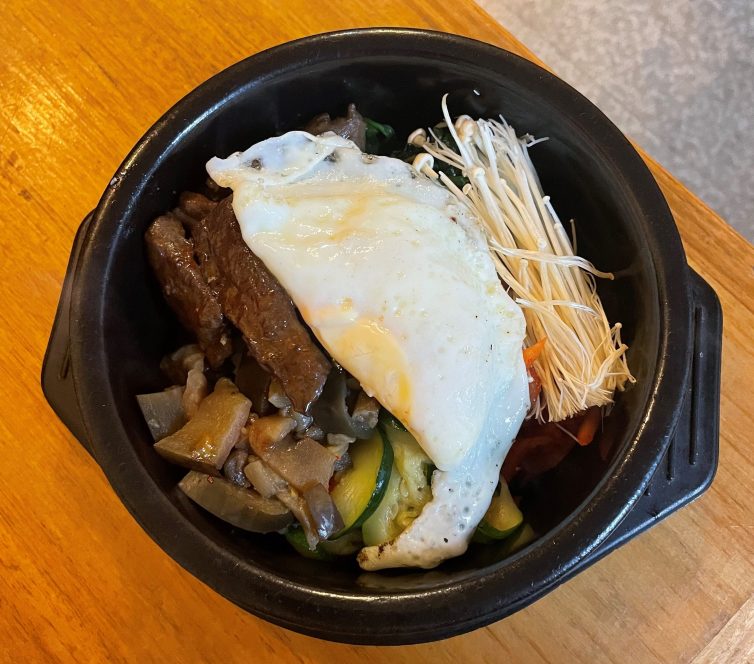
Those who know me could easily name Korean as one of my go-to cuisines. And while I will never turn down KBBQ and a golden bowl of makgeolli, I can’t go past the no-frills mom-and-pop-style suburban eateries. Jingogae is located in North Sydney and has been family run since its inception, with just two people working across the kitchen and the floor. The menu is quite extensive, but I’d recommend going straight to the traditional Korean dishes page.
Bibimbap is served in the traditional dolsot stone bowl, with Jingogae modelling its version from the Jeollabuk-do province’s Jeonju iteration, with marinated beef, seasoned vegetables (zucchini and enoki on my visit) kimchi, gochujang, and rice topped with a fried egg. The bowl arrives to the table with a crackling soundtrack — nourishing food at its best.
Gimlet’s half lobster
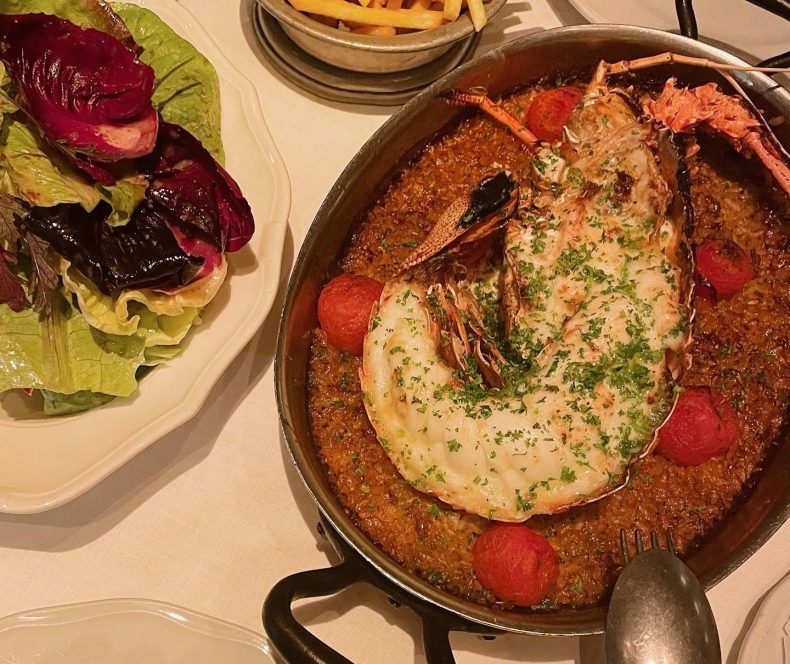
I headed to Melbourne for just one night last July, which presented a conundrum — where to eat? Out of all the restaurants that had opened since my last visit in 2018 (embarrassing, I know), Gimlet had to be it. After writing about the tableside tartare and interviewing bar whiz Cameron Parish on the gin fizz a little while ago, I had high hopes for the Gimlet experience — something I usually try to avoid — but it delivered.
The value of Gimlet’s $150pp seasonal menu was obvious from the main: a half rock lobster roasted in saffron rice with rouille. The crustacean was wheeled over to the table for a photo op before it was deconstructed by a member of the front of house team. The saffron rice was memorably umami and punctuated with tomatoes that tasted highly seasonal, despite the fact it was winter. The lobster was accompanied by fries and a house salad, also good teammates for the leftover rice.
Poetica’s flambadou oysters
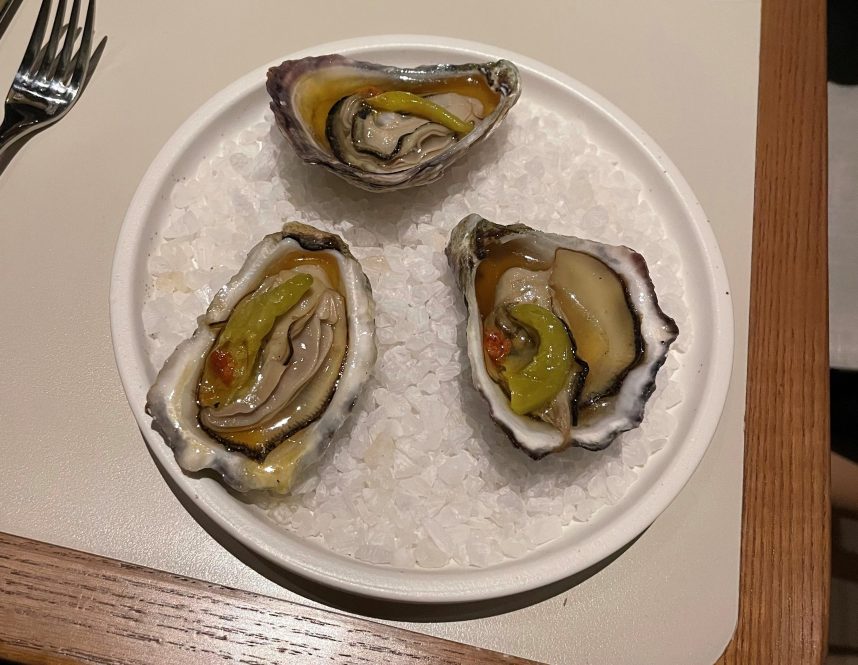
What is a flambadou? is the question I asked myself when I saw it on the menu. Obviously, some type of flame was involved, which made sense when Chef Connor Hartley-Simpson demoed the process of covering oysters in molten fat from a metal cone that is a flambadou. A heated cone was filled with beef fat which flames before the fat was drizzled over the oysters which each had a guindilla pepper and some ’nduja nestled inside. The process ultimately cooks the oyster and caramelises the ’nduja, resulting in one of the more unique oyster offerings in Sydney.
Mumu’s grilled abalone
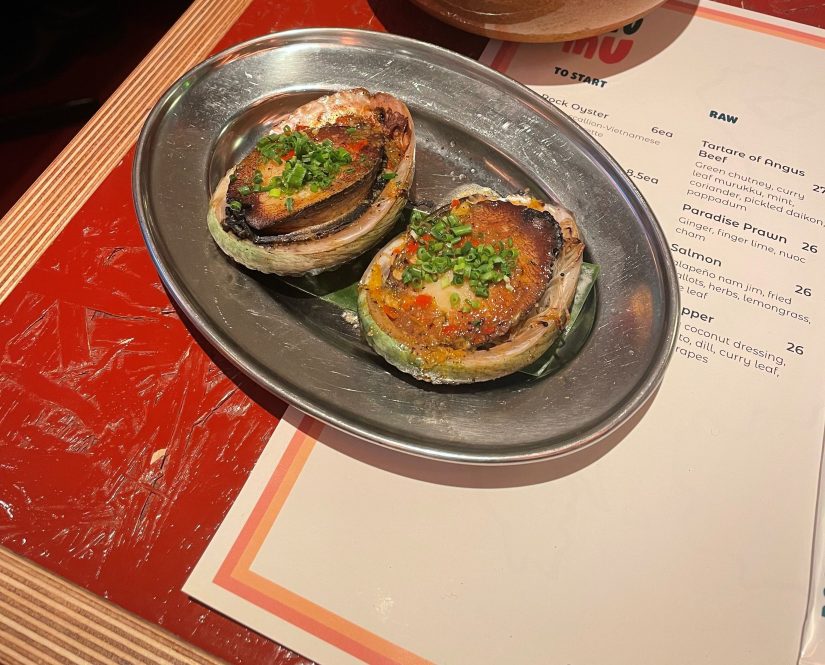
Abalone is up there for me when it comes to seafood — it’s tender, slightly chewy, and reminiscent of a scallop (also up there). So, when I went to Mumu for the first time for lunch, I had to try Head Chef Oliver Hua’s take on the dish, who put together the menu with Merivale Executive Chef Dan Hong. Baby black lip abalone is served in its shell which is filled with chilli, garlic, coriander, fish sauce, brown butter, and vermicelli.
It’s a moreish bite with a welcome funk from the fish sauce and also very reasonably priced at $12 a pop. A good starter for the rest of the Mumu experience.
Clam Bar’s spaghetti and clams
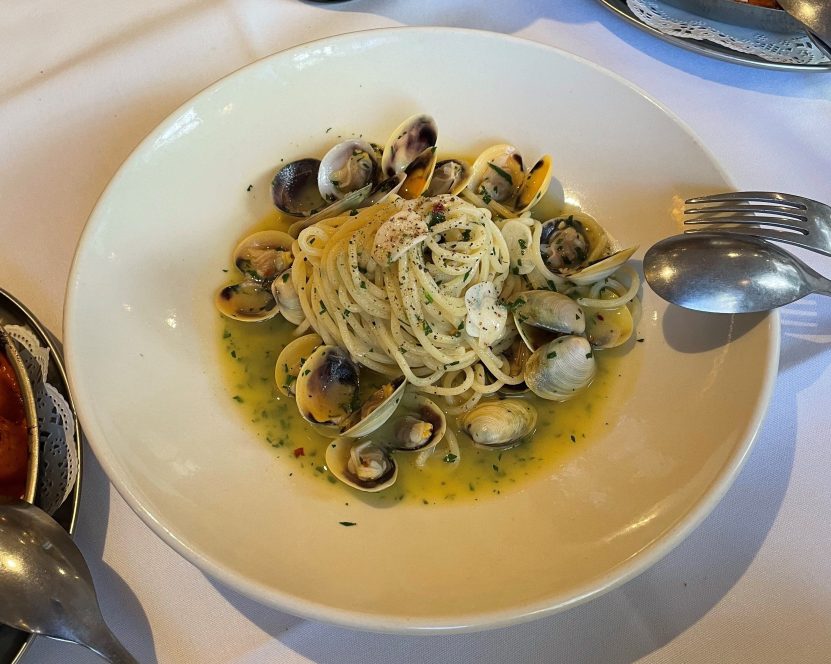
I knew I was going to like Clam Bar when I spotted the entryway across the street. The name of the restaurant is spelled out vertically down the side of each door — an impactful design choice. The crack team behind Sydney’s Pellegrino 2000 and Bistrot 916 have done it again with their latest offering, taking over the former location of the Bridge Room and decking it out with vintage posters, leather banquette seating, and clam sconces fixed to the walls.
Clam Bar’s namesake spaghetti is coated in a sauce of butter, white wine, garlic, parsley, and a pinch of chilli that pools in the Diamond clams and onto the bottom of the plate. Once you’re done with the spaghetti, beef fat potatoes or fries are the ideal dunking vessels to polish off the rest of the sauce.
Ursula’s egg sandwich
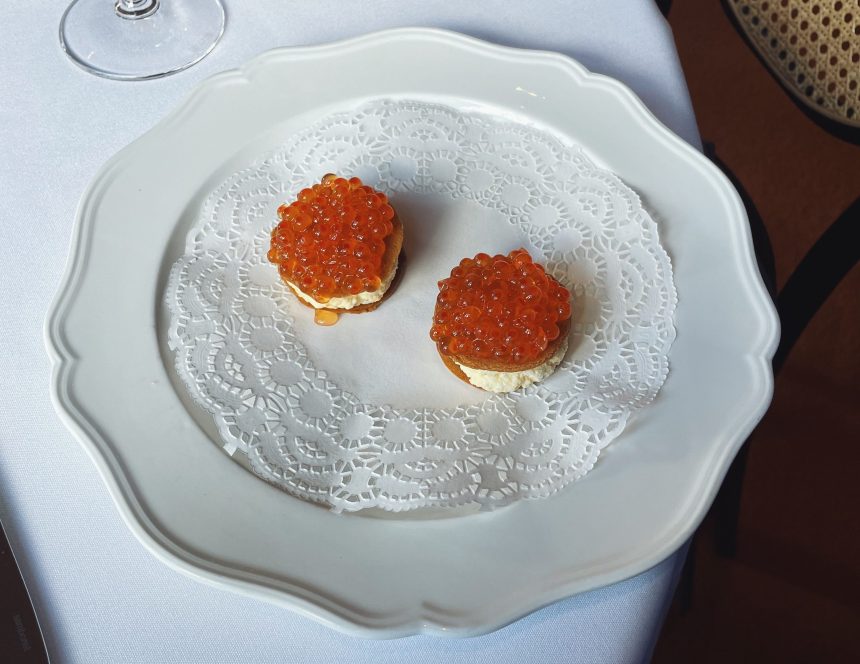
An egg sandwich at Ursula’s? A very clever take on a classic by Owner and Chef Phil Wood at the Paddington restaurant. A generous glob of egg ‘salad’ is sandwiched between two wafer-thin circular discs and topped with salmon roe that will fall to the plate as soon as you take a bite — but maybe not if you eat it in one go. Speaking of
bites, it is all things rich and decadent, with the popped roe punctuating the morsel’s creaminess in the best way.
There is a fine line between innovating a menu and pleasing customers, and I really appreciate the way Wood has evolved the menu at Ursula’s over the two years it’s been open — dining here is always a pleasure.
Xin Jiang Hand Made Noodle’s beef noodles
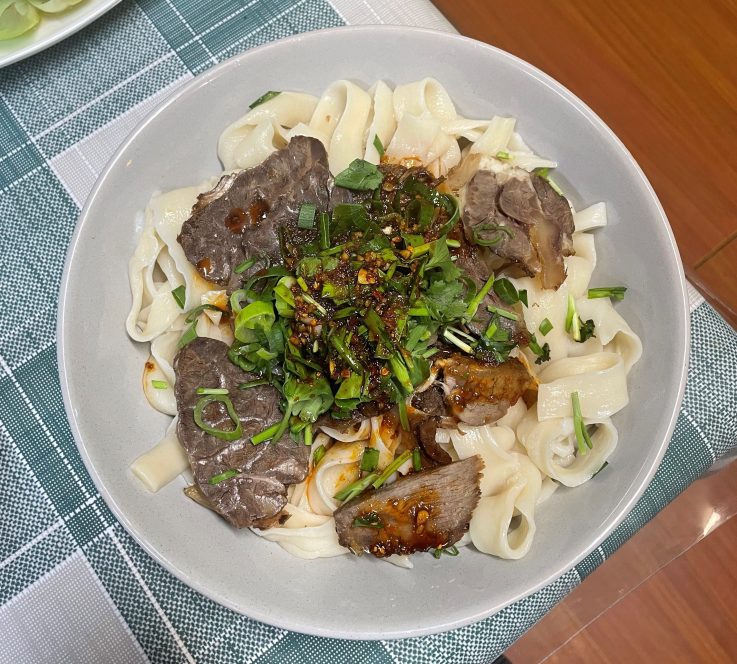
Chatwood is one of my most-frequented eating suburbs in my downtime (or any time) whether it’s ramen at Manpuku, Malaysian food a la Amah, or in this case, handmade noodles. This upstairs eatery serves dishes from its namesake location in Xinjiang in northwest China, which means the menu is full of handmade dumplings, cumin lamb skewers, and my rec — noodles.
There’s a decent selection across soup and dry applications, but I can’t go past the beef noodles which are doused in a spice mix of cumin, Sichuan peppercorns and coriander seeds and covered in a sauce of chilli oil, vinegar, Shaoxing wine, and soy. The dish is typically stir-fried with ginger, garlic, onion, and a shower of coriander and is something I could easily eat on a weekly basis.
Sponsored Content

Discover Dairy Farmers’ range of shredded cheese
Sponsored by Bega

Beachfront Melbourne Club catering & restaurant opportunity
Sponsored by Future Food
Trending Now
Resources
Lorem ipsum dolor sit amet, consectetur adipiscing elit. Fusce ac ornare lectus. Sed bibendum lobortis...
Lorem ipsum dolor sit amet, consectetur adipiscing elit. Fusce ac ornare lectus. Sed bibendum lobortis...
Sign up for our newsletter
